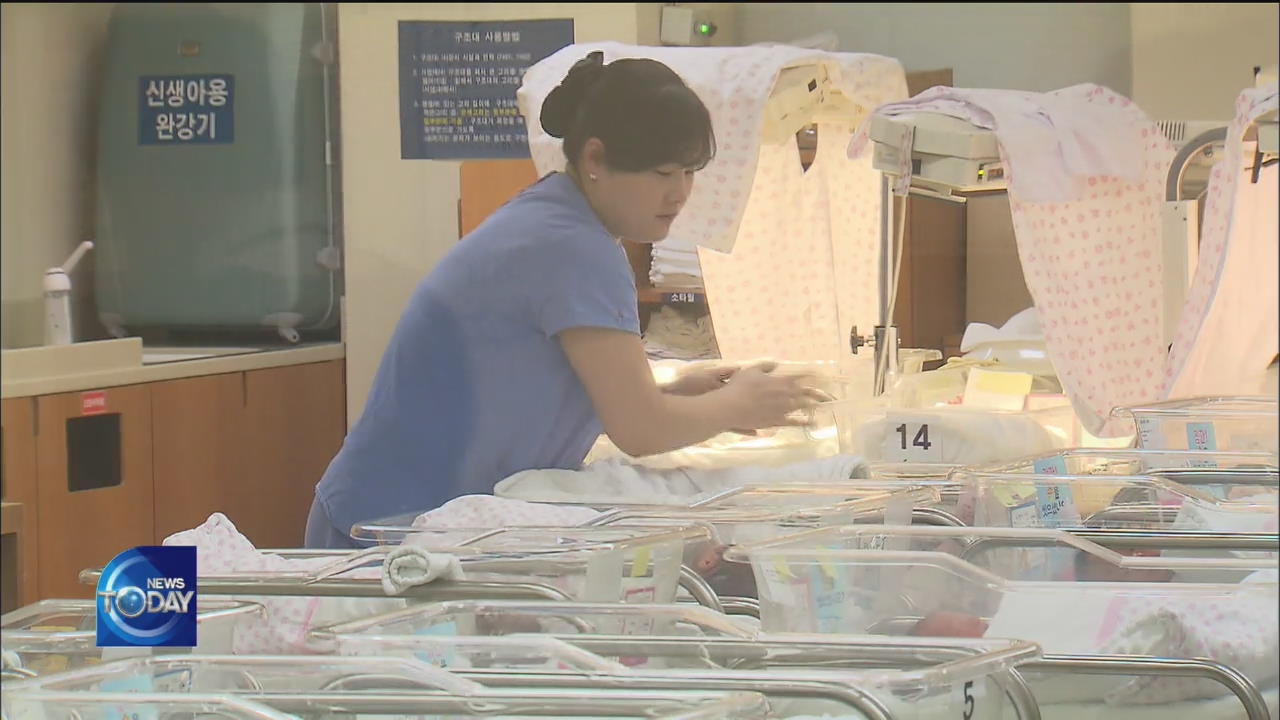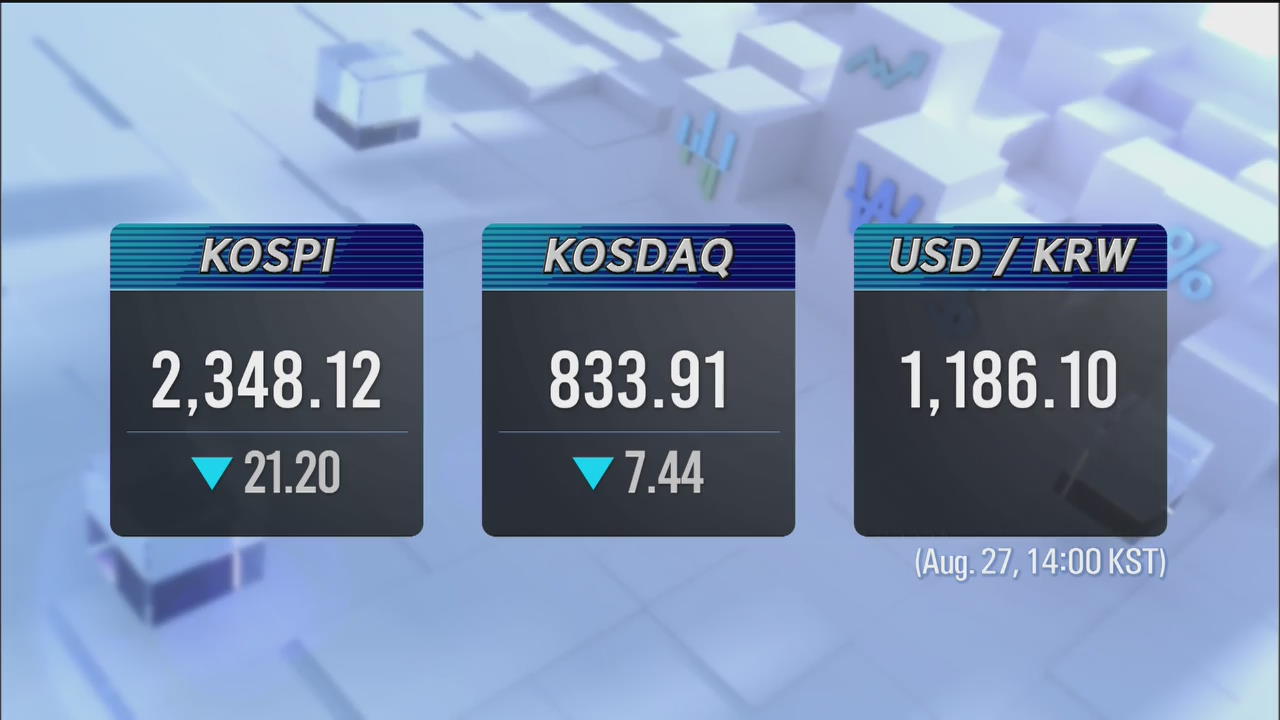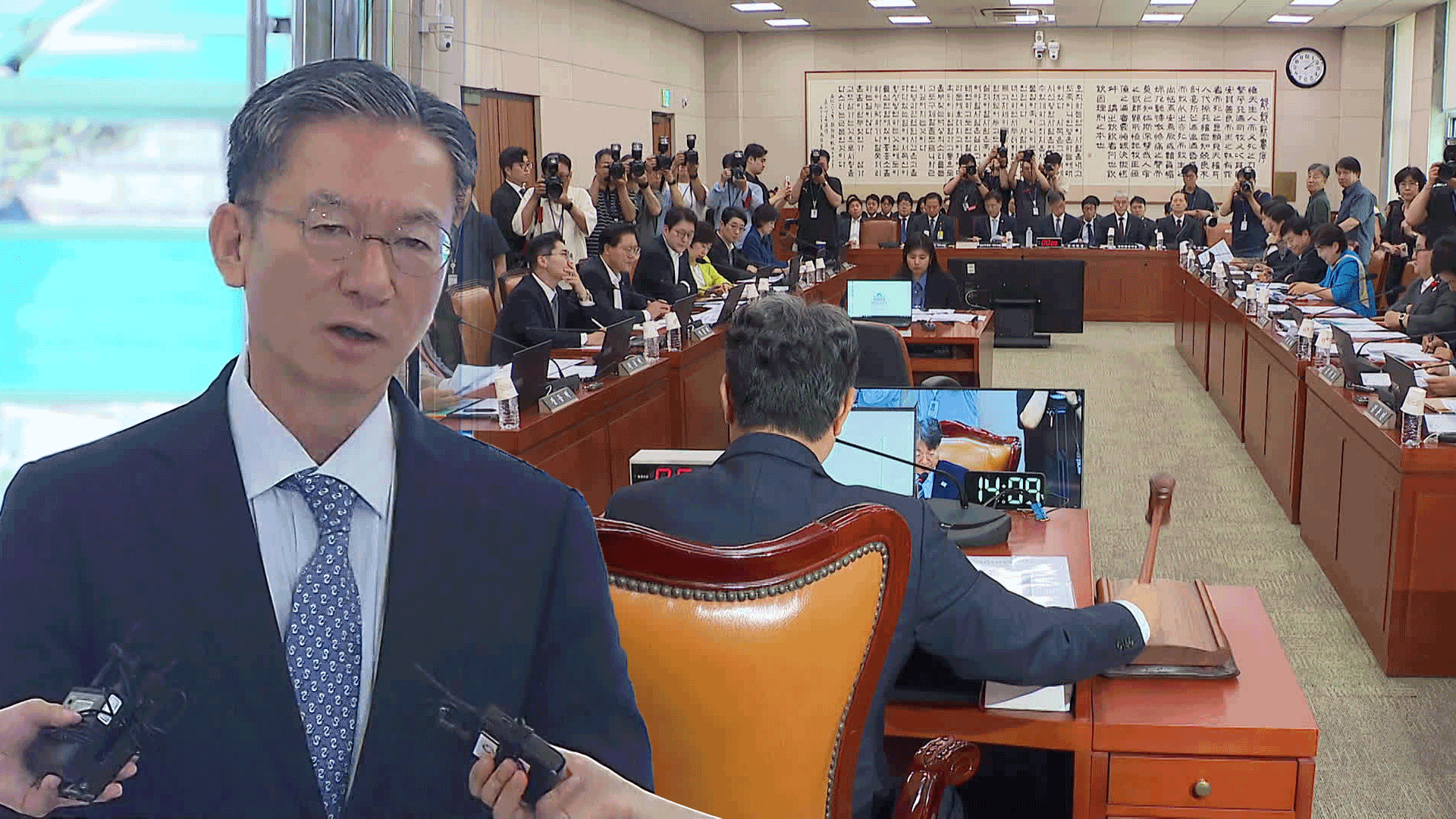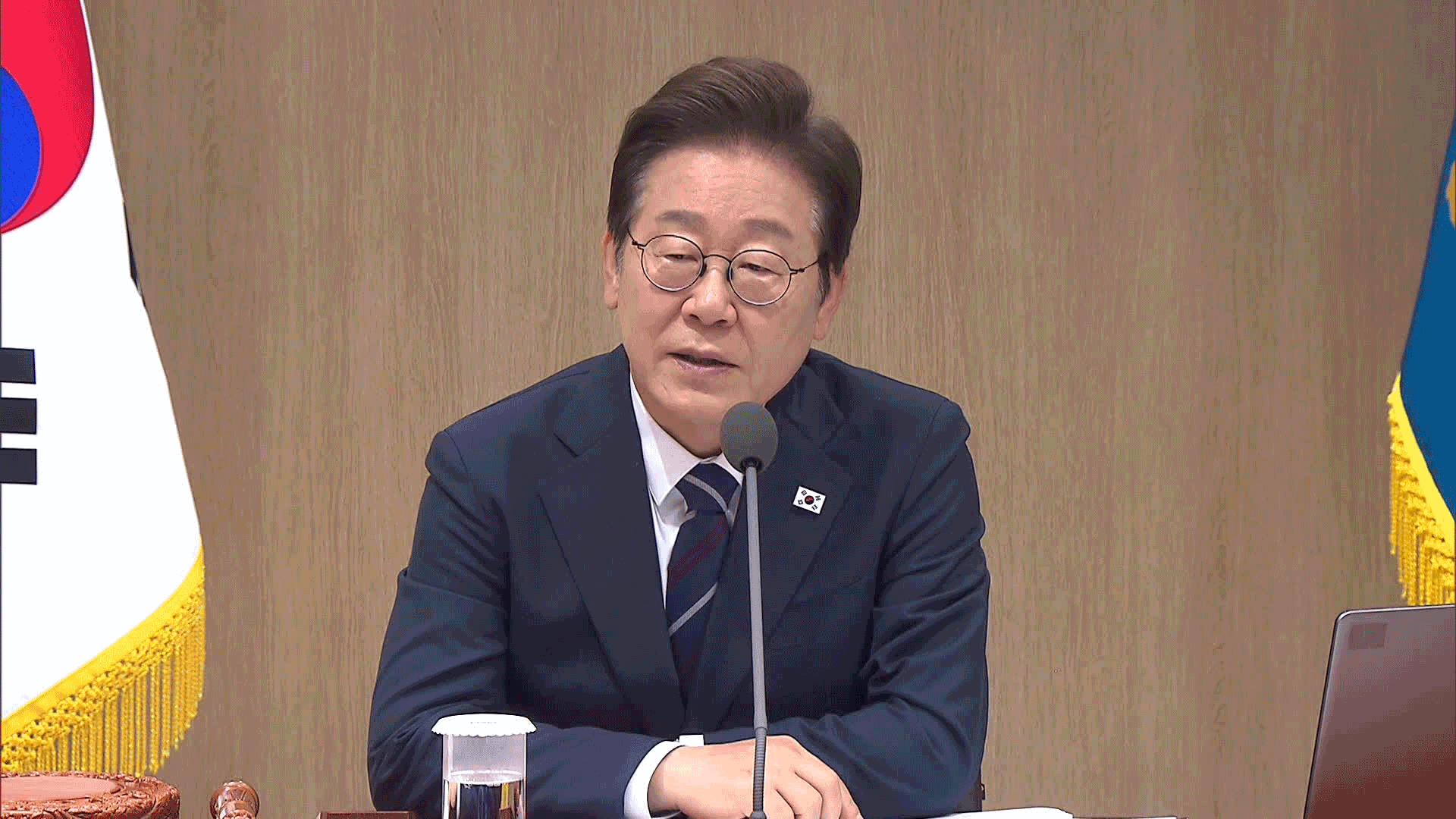S. KOREA'S OVERALL POPULATION LIKELY TO DECREASE
입력 2020.08.27 (15:05)
수정 2020.08.27 (16:50)
읽어주기 기능은 크롬기반의
브라우저에서만 사용하실 수 있습니다.
[Anchor Lead]
On the rapid decrease in the number of newborns, South Korea's population has contracted for the 8th straight month. At this pace, some suggest the country will likely see a population decrease for the first time this year since related data began to be compiled in 1970.
[Pkg]
In June, 22-thousand babies were born while over 23-thousand people died. This represents a natural population decline where the mortality rate outpaces the number of newborns. This pattern continued for 8 straight months. The nation's population has fallen by some 10-thousand during the first half of 2020 alone. The biggest contributor is a sharp drop in newborns. In June, that figure plunged more than 7% on-year, while the number of fatalities rose almost 3%. Also it's been quite some time the total fertility rate, or the number of children that would be born to an average woman during her lifetime, dipped below one. Korea's total fertility rate slipped below one that year and further dropped to 0.8 in the second quarter of 2020. It's becoming increasingly likely South Korea will see a population decrease for the first time since the nation started compiling related data.
[Soundbite] KIM SOO-YEONG(STATISTICS KOREA) : "Continued drop in newborns and a further rise in death rate is expected due to the aging population, resulting in the likelihood of a natural population decline occurring this year."
The chances of a turnaround in the near future seems low. This is mainly because fewer people are tying the knot. The number of recorded marriages in 2015 was 300-thousand. It fell to 230-thousand last year. The figures dipped further down to some 100-thousand in the first half of 2020, reaching an all time low. The number of women in their early 30s, typically with the highest birth rate, has been on a sharp decline since 2015.
[Soundbite] PROF. SUNG TAE-YOON(YONSEI UNIVERSITY) : "A population decrease weakens growth potential and threatens the sustainability of public funds, negatively impacting the overall economy."
On Thursday the Government plans to announce a concrete policy direction to better respond to the low birth rate and aging population issues.
On the rapid decrease in the number of newborns, South Korea's population has contracted for the 8th straight month. At this pace, some suggest the country will likely see a population decrease for the first time this year since related data began to be compiled in 1970.
[Pkg]
In June, 22-thousand babies were born while over 23-thousand people died. This represents a natural population decline where the mortality rate outpaces the number of newborns. This pattern continued for 8 straight months. The nation's population has fallen by some 10-thousand during the first half of 2020 alone. The biggest contributor is a sharp drop in newborns. In June, that figure plunged more than 7% on-year, while the number of fatalities rose almost 3%. Also it's been quite some time the total fertility rate, or the number of children that would be born to an average woman during her lifetime, dipped below one. Korea's total fertility rate slipped below one that year and further dropped to 0.8 in the second quarter of 2020. It's becoming increasingly likely South Korea will see a population decrease for the first time since the nation started compiling related data.
[Soundbite] KIM SOO-YEONG(STATISTICS KOREA) : "Continued drop in newborns and a further rise in death rate is expected due to the aging population, resulting in the likelihood of a natural population decline occurring this year."
The chances of a turnaround in the near future seems low. This is mainly because fewer people are tying the knot. The number of recorded marriages in 2015 was 300-thousand. It fell to 230-thousand last year. The figures dipped further down to some 100-thousand in the first half of 2020, reaching an all time low. The number of women in their early 30s, typically with the highest birth rate, has been on a sharp decline since 2015.
[Soundbite] PROF. SUNG TAE-YOON(YONSEI UNIVERSITY) : "A population decrease weakens growth potential and threatens the sustainability of public funds, negatively impacting the overall economy."
On Thursday the Government plans to announce a concrete policy direction to better respond to the low birth rate and aging population issues.
■ 제보하기
▷ 카카오톡 : 'KBS제보' 검색, 채널 추가
▷ 전화 : 02-781-1234, 4444
▷ 이메일 : kbs1234@kbs.co.kr
▷ 유튜브, 네이버, 카카오에서도 KBS뉴스를 구독해주세요!
- S. KOREA'S OVERALL POPULATION LIKELY TO DECREASE
-
- 입력 2020-08-27 14:59:51
- 수정2020-08-27 16:50:35

[Anchor Lead]
On the rapid decrease in the number of newborns, South Korea's population has contracted for the 8th straight month. At this pace, some suggest the country will likely see a population decrease for the first time this year since related data began to be compiled in 1970.
[Pkg]
In June, 22-thousand babies were born while over 23-thousand people died. This represents a natural population decline where the mortality rate outpaces the number of newborns. This pattern continued for 8 straight months. The nation's population has fallen by some 10-thousand during the first half of 2020 alone. The biggest contributor is a sharp drop in newborns. In June, that figure plunged more than 7% on-year, while the number of fatalities rose almost 3%. Also it's been quite some time the total fertility rate, or the number of children that would be born to an average woman during her lifetime, dipped below one. Korea's total fertility rate slipped below one that year and further dropped to 0.8 in the second quarter of 2020. It's becoming increasingly likely South Korea will see a population decrease for the first time since the nation started compiling related data.
[Soundbite] KIM SOO-YEONG(STATISTICS KOREA) : "Continued drop in newborns and a further rise in death rate is expected due to the aging population, resulting in the likelihood of a natural population decline occurring this year."
The chances of a turnaround in the near future seems low. This is mainly because fewer people are tying the knot. The number of recorded marriages in 2015 was 300-thousand. It fell to 230-thousand last year. The figures dipped further down to some 100-thousand in the first half of 2020, reaching an all time low. The number of women in their early 30s, typically with the highest birth rate, has been on a sharp decline since 2015.
[Soundbite] PROF. SUNG TAE-YOON(YONSEI UNIVERSITY) : "A population decrease weakens growth potential and threatens the sustainability of public funds, negatively impacting the overall economy."
On Thursday the Government plans to announce a concrete policy direction to better respond to the low birth rate and aging population issues.
On the rapid decrease in the number of newborns, South Korea's population has contracted for the 8th straight month. At this pace, some suggest the country will likely see a population decrease for the first time this year since related data began to be compiled in 1970.
[Pkg]
In June, 22-thousand babies were born while over 23-thousand people died. This represents a natural population decline where the mortality rate outpaces the number of newborns. This pattern continued for 8 straight months. The nation's population has fallen by some 10-thousand during the first half of 2020 alone. The biggest contributor is a sharp drop in newborns. In June, that figure plunged more than 7% on-year, while the number of fatalities rose almost 3%. Also it's been quite some time the total fertility rate, or the number of children that would be born to an average woman during her lifetime, dipped below one. Korea's total fertility rate slipped below one that year and further dropped to 0.8 in the second quarter of 2020. It's becoming increasingly likely South Korea will see a population decrease for the first time since the nation started compiling related data.
[Soundbite] KIM SOO-YEONG(STATISTICS KOREA) : "Continued drop in newborns and a further rise in death rate is expected due to the aging population, resulting in the likelihood of a natural population decline occurring this year."
The chances of a turnaround in the near future seems low. This is mainly because fewer people are tying the knot. The number of recorded marriages in 2015 was 300-thousand. It fell to 230-thousand last year. The figures dipped further down to some 100-thousand in the first half of 2020, reaching an all time low. The number of women in their early 30s, typically with the highest birth rate, has been on a sharp decline since 2015.
[Soundbite] PROF. SUNG TAE-YOON(YONSEI UNIVERSITY) : "A population decrease weakens growth potential and threatens the sustainability of public funds, negatively impacting the overall economy."
On Thursday the Government plans to announce a concrete policy direction to better respond to the low birth rate and aging population issues.
이 기사가 좋으셨다면
-
좋아요
0
-
응원해요
0
-
후속 원해요
0














![[단독] 골프연습장 아니라더니<br>…‘한남동 골프연습장’ 도면 입수](/data/news/2025/07/01/20250701_Uh8Jnu.png)


이 기사에 대한 의견을 남겨주세요.